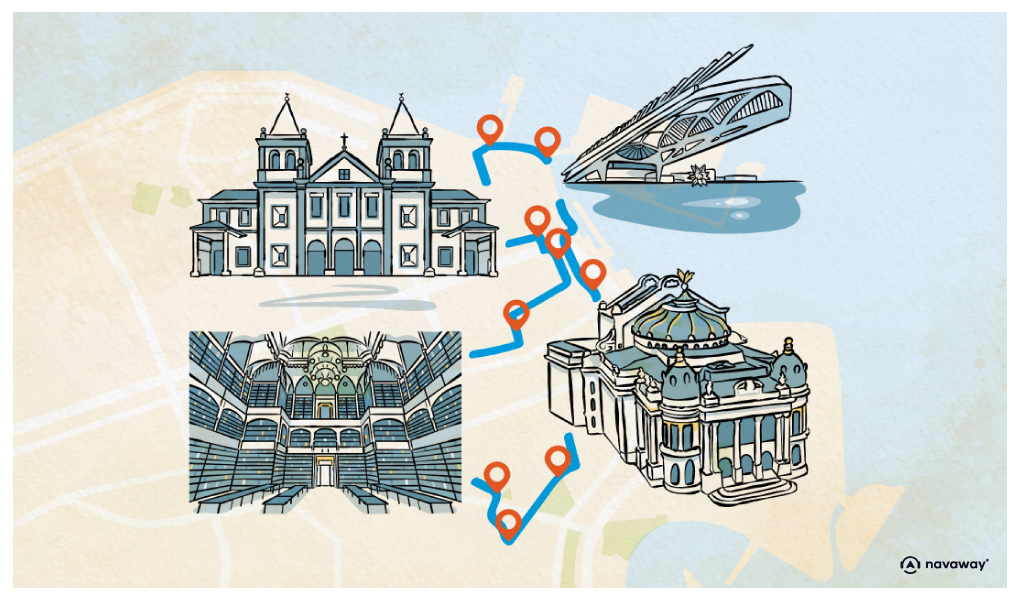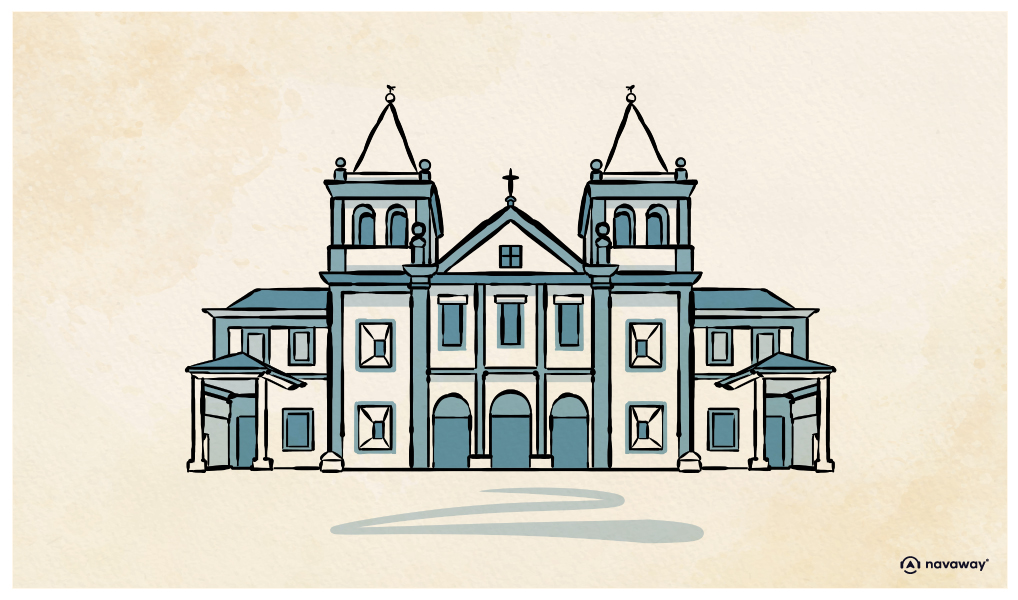
São Bento Monastery

This point of interest is available as audio on the tour: Visit Rio de Janeiro, La Cidade Maravilhosa – The City of Wonders
This is the entrance to the São Bento monastery. Feel free to pause the audio guide and explore the place yourself. The church’s hilltop location and imposing façade hint at its dual role: a place of worship and a stronghold for defense. Back in colonial times, it was common practice to build fortress churches. See those turrets with cannonballs? Well, they’re not just there for decor; they’re a reminder of the structure’s dual function. The monastery dates from 1586, back when the Benedictine monks were given a large plot of land, including this very hill you climbed, as a gift from a noble Portuguese family. They then decided to build an abbey, funded by donations from the many sugar cane producers who were making a fortune at the time. Construction began in 1633 and lasted around 40 years. The church was built by African slaves to plans drafted by a Portuguese military engineer, in line with the pared-down aesthetic much popular in metropolitan France back then. But don’t be fooled by the plain exterior, because inside things get wild! After all, we’re talking about a time when the gold was so plentiful, they used it to cover church walls. A far cry from simplicity! Once inside, you’ll be dazzled by the opulent display of gold leaf gilding and mesmerizing sculptures. The walls are adorned with gold-painted stucco shaped like palm leaves. Don’t forget to look up as you enter and admire the mermaids holding the balustrade, which houses an antique German organ dating from 1773. As for the silver chandeliers, each weighs a whopping of 227 kg, hinting once again at the monastery’s tremendous wealth. You’ll also see a statue of St. Benedict, the monastery’s patron saint. He’s holding a chalice with a serpent and a raven carrying bread in its beak, recalling his resistance to temptation. If you want to get the full experience, you can attend the Sunday mass, and listen to the Gregorian chants of the Dominican friars. The entire complex has been listed as a UNESCO World Heritage Site.


Discover Rio de Janeiro with app
An interactive guide through the most beautiful streets, squares, and districts
24 fun audioguides full of historical facts, anecdotes, and legends





Comments